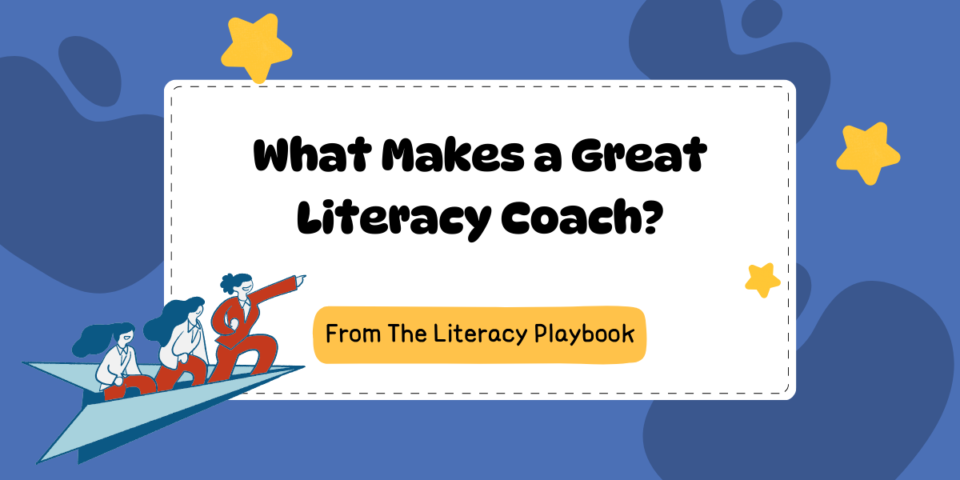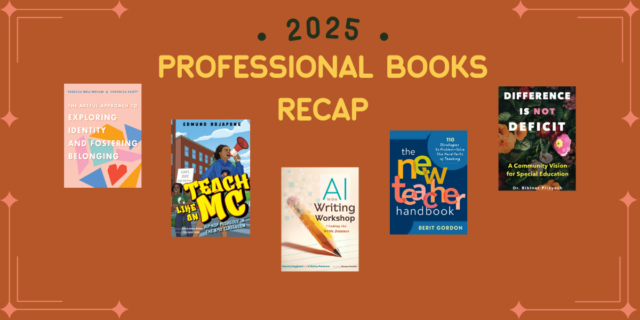
The following is adapted from Your Literacy Coaching Playbook.
Effective coaches position themselves as thinking partners, colleagues, advocates, problem solvers, and active participants in working with teachers to support a strong culture of continuous professional learning in the school. Effective coaches are collaborators, bringing together people who share common goals, interests, or problems of practice and putting them in touch with each other and with other sources of professional knowledge, such as current research on teaching and learning as well as professional magazines, organizations, and books. Although they have broad expertise to share, effective coaches make it clear that they do not think of themselves as “experts,” but as thought partners who facilitate the continuous professional learning of their colleagues. They position themselves as learners who draw understandings from their observations of and interactions with colleagues.
Meaningful change happens when teachers are inspired by a clear sense of purpose and a collective commitment to excellence, when they willingly help one another solve problems and celebrate successes, and when they are offered compelling professional learning opportunities, including one-on-one coaching, that they trust will keep them working at the top of their game.
The Multidimensional Role of Coach
The coaching role—and the amount of time allotted to it—varies greatly from school to school. Some schools are staffed with multiple coaches, each of whom concentrates on a different content area or a span of grade levels. Some coaches have flexibility to provide coaching support across an entire school day, while others have only a few hours a day on a few days of the week. But the one thing all coaches have in common is the multidimensional aspect of their role.
Coaches typically fill multiple roles simultaneously. One of the most challenging and rewarding aspects of being a coach is balancing the range of responsibilities while serving different personalities, varying levels of experience, and diverse needs within a group of teachers. Though you have an official job description, and you might clearly communicate your role to your team, it is difficult to capture the element of coaching that we describe as “taking a coaching stance all day long.” How do you capture the hundreds of brief, supportive interactions that you have with colleagues across a day, month, or year? The answer is you don’t. You are spontaneously supporting teacher learning all the time—when you have a conversation at lunch about a student’s work, when you send a text about a book you know a class will love, when you write an email responding to a question, and when you have an impromptu conversation in the corridor about a problem of practice. For some coaches with limited time, these brief interactions comprise most of their coaching opportunities.
Regardless of the amount of time you are given, you can make the most of even your briefest exchanges, so don’t underestimate how small moments can have a big impact. When you make personal connections with teachers, take time to check in, and support them with small gestures, you make a difference in the way your colleagues perceive you as a member of the team. You inspire them, and they in turn inspire their students.
Your Attitude Toward Your Role
As an expression of your mindset and approach to working with others, your coaching stance conveys your attitudes about professional learning, collaboration, growth, problem-solving, self-reflection, and more. The way you see yourself feeds directly into your stance, which is the way you form relationships with and present yourself to teachers, other coaches, students, and administrators. Your stance will also be reflected in the language you choose when you communicate with others.
As a coach, you help colleagues see where they are in their thinking, articulate where they want to be, and develop a plan to get there. When you consult with a teacher, your stance requires more listening than telling. It means bringing the individual into the interaction to make decisions and seek solutions. Each time individuals make a decision and analyze its impact, understanding expands—and that’s what you want for the teachers you coach.
The coaching stance is not a rigid, single way of being. It is fluid, multifaceted, and responsive to each teacher’s unique needs. In general, you can think of your coaching stance as a composite of multiple stances that you will move in and out of, often unconsciously, in response to what’s called for in the moment.
Whenever you interact with teachers in whatever context you find yourself, remember that your stance as a coach reflects the way you see yourself and how others see you. It is important that every interaction conveys “learning together” as you position yourself as a thought partner and draw individuals into the conversation.
The only coaching handbook you’ll need, filled with actionable advice and classroom examples.



